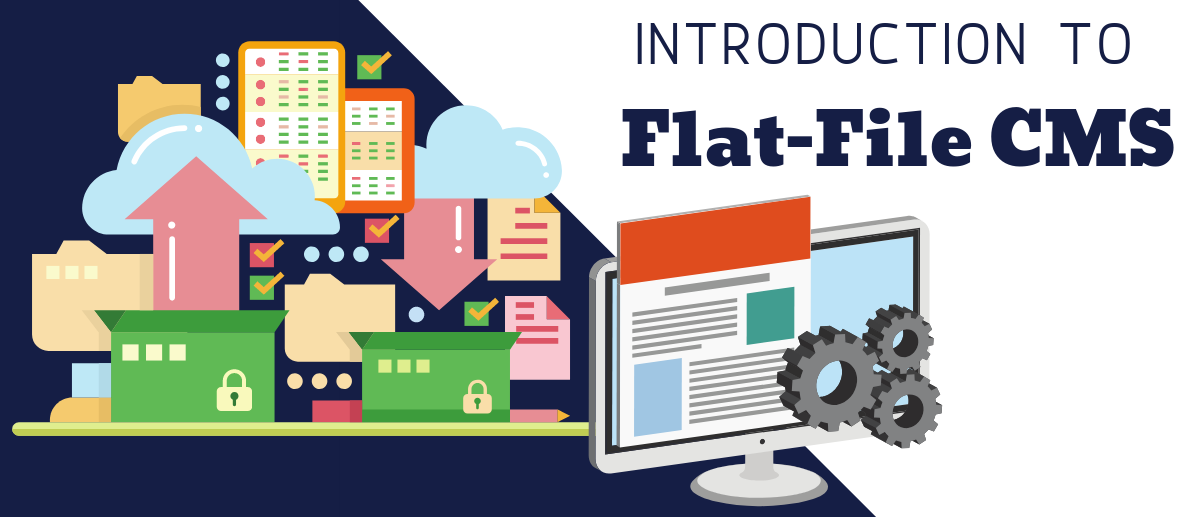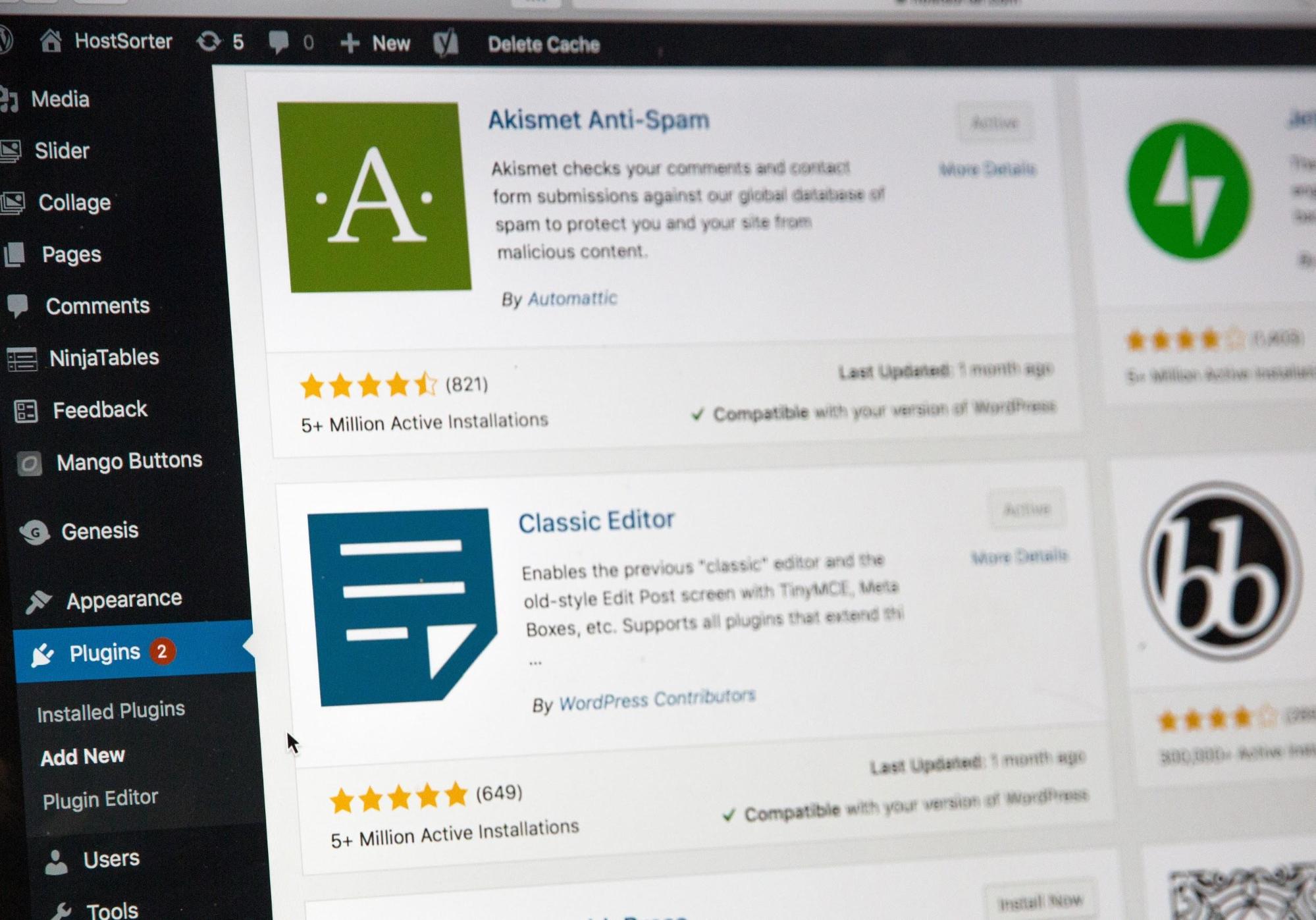
GSD
Introduction to Flat-File CMS: Is It Right for You?
Posted by Ben Rogojan on September 11, 2023
Table of contents
Photo by Web Hosting on Unsplash
A CMS is a system that provides an organized way to edit the content you post online. It also reduces the amount of technical knowledge required to manage a website. This software gives users the ability to create, manage, and modify content on a website very easily. Probably the most well-known CMS is WordPress, which allows you to easily share content without requiring in-depth knowledge about programming.
The Types Of CMSs
CMSs can work both with and without a database supporting it. What is a flat-file CMS? A CMS without a database is called a flat-file CMS. This is a system where the content is managed using data in plain text files called flat files. Besides that, there are also API-driven CMSs that come in a few varieties.
Let’s compare some of the different types of CMSs.
Traditional CMS
Many people who have worked with WordPress have essentially worked with a traditional CMS. As mentioned earlier, WordPress is a great example. It manages pretty much all the code, so the only thing users need to do is write content. From there, the MySQL back-end will push data to the application layer, which will then push the data to the front-end—all without requiring any real coding from the end-user.
API-Driven CMS (Headless CMS)
Headless CMSs don’t include the front-end layer. This CMS is really only the back-end and can usually be accessed by a RESTful API. Traditional CMS tools ask for a specific framework to be used for the front-end, whereas headless CMS tools are more versatile. For those who prefer using specific languages, the versatility of headless CMSs can be very useful. It typically just passes data to the front-end using JSON or XML, which is then parsed by the developer’s preferred framework. This also makes it easy to plug in new front-ends as the internet modernizes.
Decoupled CMS
A headless CMS and a decoupled CMS are similar but with some important differences. A decoupled CMS “decouples” the display on the front and the content at the back. An API is used to serve content, with it being managed in one area while the website’s code is handled elsewhere. However, there are a few types of front-end delivery systems. Decoupled CMSs are kind of a hybrid of both traditional and headless CMSs. They offer the ability to have both a back- and front-end that are easy to use while also allowing for calls to be made often using an API.
Flat-File CMS
A flat-file CMS works much like a traditional CMS. It has an interface to edit and manage content along with a front-end templating system. However, it doesn’t need a database. When someone changes the content, the server saves the file. One advantage we see here is that the content is version-controlled as a template or an asset file. Since database queries are not present, the website is supposed to respond more quickly. Flat-file systems are lighter on the wallet in working and hosting too.
Now, there are plenty of articles on traditional, headless, and decoupled CMS. So in this article, we wanted to look at a flat-file CMS and why someone might consider it.
Is a Flat-File CMS Right for You?
Flat-file databases work best for those CMS systems that require rendering of mixed, unstructured content. However, for content that requires more structure, you will need a relational database (MySQL, SQL Server, etc.).
Here are a few reasons why flat-file CMSs are useful:
- If your website has large amounts of traffic on a shared hosted environment, a flat-file CMS will require fewer resources than a database-driven CMS. For example, WordPress—which is often backed by MySQL—is resource-intensive. This is because there are calls that need to be made back to the database. This takes longer than pulling flat files.
- For a static website, content can be easily added or managed.
- Your content can be controlled with a built-in version. Many flat-file CMSs work with GitHub, which provides version control of all the pages and content on the sites.
- It offers easy installation on an FTP client alone. So using a flat-file CMS, you can quickly deploy into your development environment. What’s more is the size of flat-file platforms—flat-file CMS are lightweight and typically very small.
- Flat-file systems are easy to migrate because they are smaller and have fewer moving pieces.
To summarize, a flat-file CMS does not need a database—it saves data to text files. It also provides various benefits when compared to database-driven systems.
Almost all CMSs work with databases to save their content, but the flat-file CMS has brought a shift to this trend. Due to solid-state drives and better internet speed, database-driven solutions can be less effective.
Benefits of Using a Flat-File CMS
Flat-file systems are dependent upon the operations of the website and work according to their demands. The file-based content management system has several advantages that are mainly due to its simple structure:
- Security: Since the system is simple, there are fewer chances of errors. (However, if you forget the structure and let an error run through in the architecture, that counts as a major mistake.) A simple folder structure is easily manageable and does not have many dependencies. This can be said for external security too: SQL is a favorite choice for malicious attacks. By constantly inserting SQL commands, attackers can mess with the data. With flat-file CMSs, you don’t have to worry about that.
- Back-up: Flat-file CMSs are easy to back up—simply copy and paste! For more complex systems, you can routinely back up to effectively save system data, databases, and integrated files. Flat-file CMSs require a back-up copy, and you can save it, for example, on a USB drive.
- Moving: WordPress, Typo3, and Drupal all require a shift of servers when moving websites, and that takes time. Oftentimes, relocating a website that is based on a flat-file CMS just requires copying over the files.
Drawbacks of Flat-File CMSs
For all the benefits we have just laid out about flat-file CMSs, there are plenty of drawbacks as well.
- Server extension: Owing to the folder structure, all files are required to run on a web server. This is not always plausible since data cannot be distributed to many servers when mass data or deliberate redundancies restrict them from doing so.
- User-friendly: WordPress is heavily used because it does not require any coding to upload a website. Because flat-file CMSs are still new, they’re not user-friendly to non-technical folks and can be somewhat disheartening to use. However, they provide better stability, efficient performance, and manageable functions. If you’re relying on a flat-file CMS, you will need to also have a good grasp on code. If you aren’t comfortable with HTML, PHP, CSS, and Markdown, then perhaps a flat-file system isn’t a good fit.
- Areas of application: A flat-file CMS works poorly when you have extra needs that require additional features. WordPress is greatly known for its customized features, and it supports several plugins for many application areasFlat-file systems, on the other hand, simply don’t work in this direction.
Should You Consider a Headless API-Driven CMS?
Flat-file CMSs aren’t always the best option, especially with the rapidly modernizing web. They are light-weight and much faster than database driven CMSs. However, they don’t meet every companies need. For example, our team recently was working with a company that wanted to track usage on a user level but all the plug-ins provided by the CMS were too heavy and slowed down load time. Due to their CMS, they did not have the flexibility to easily create their own scripts to track this data. In cases like this, a headless API-driven CMSs would have been great.
Headless API-driven CMSs are great because they allow you to have more control over what development frameworks you use, without having to manage the code that allows you to store and edit your content. A CMS based on a headless API provides editing features similar to those of traditional CMSs, and they are easy to set up and maintain by developers.
These CMSs will often require fewer technical resources, which can help your company’s bottom line. They also allow your developers to focus on more important aspects of your business besides basic CRUD operations and content management. API-driven CMSs have several other advantages as well:
Device Delivery
Thanks to modern technology, users are no longer only scrolling through your websites on PCs. Now there are phones, tablets, laptops, watches, and who knows what else the future holds. Traditional CMSs just can’t keep up with this omnichannel world. With an API-based CMS, you can deliver content faster to the devices and channels you need now and in the future. And you can switch your front-end whenever you need.
Setup
A flat-file CMS requires the website to be made “on top” of the CMS, which forces you to build the website based on the CMS and its restrictions. An API-based CMS requires just some coding to improve CMS functionality.
Flexibility
Flat-file CMSs or traditional CMSs require the website to be built using a specific programming language or framework. API-based CMSs, on the other hand, integrate with all sorts of codebase. This means your developers can use any language or framework they prefer. Instead of being locked into PHP like with WordPress, you can actually integrate different front-ends.
If you ask any developer what it’s like to work alongside content management, they’ll tell you that it’s generally considered low-level, uninteresting work. Because API-based CMSs wipe out different difficulties found in other CMSs, development teams can do the work efficiently, allowing them to quickly shift to other, more interesting tasks.
Conclusion
API-based CMSs have unique advantages compared to their flat-file counterparts. They provide a more flexible framework while reducing the amount of development time your team needs to develop a website.
Some CMSs are meant to solve niche-based problems while others are much more versatile and can meet most teams’ needs. Getting too hung up on one developer’s preference can be detrimental if no one can maintain it. This is why it can be great to have an API-based CMS that gives your team the ability to plug and play with different preferences of development tools rather than being locked into one environment from the get-go.
With the vast number of CMSs available out there, it can be difficult to know which one best fits your needs. We hope this article has helped you determine which type of CMS is right for you.
ButterCMS is the #1 rated Headless CMS
Related articles
Don’t miss a single post
Get our latest articles, stay updated!















Ben works as a data scientist and technology consultant helping companies design, develop custom software as well as make good decisions on their future tech strategies. He enjoys writing and teaching others about all forms of technology wether it be about automation and machine learning models or CMSs.